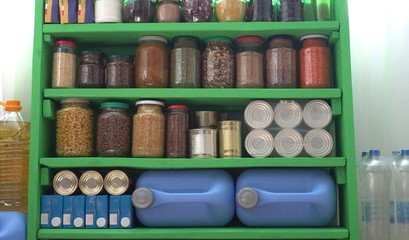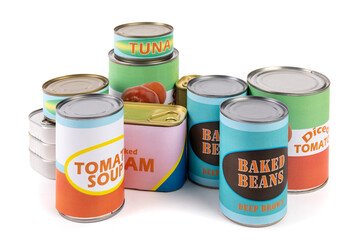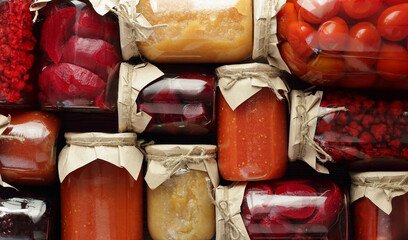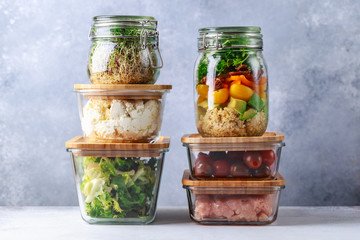BEST FOOD FOR
EMERGENCY STORAGE
& WHY IT MATTERS

Best food for emergency storage.
It’s always best to be prepared for emergency food shortages.
I have to admit that, like most people, up until the global COVID-19 pandemic in 2020, I never thought about food shortages or, for that matter, shortages of any kind. Things were just there in abundance, and I didn’t really give it a second thought
During the pandemic, I was surprised to find that the first things to be emptied off the shelves were toilet paper and paper towels. This was very confusing. You can only go 3 days without water and up to 30 days without food. It is possible to do without toilet paper and paper towels, people did it for centuries! It wasn’t until 1857 that toilet paper was invented and 1871 before toilet paper on a roll finally became a thing.
The basic needs people have are water, food, fuel, shelter, and clothing. This page will focus on the food aspect of emergency preparedness but will suggest ways to store water as well.
WHAT COULD GO WRONG?

I don’t want to scare you, but in preparing this article, I had to research the possible “what ifs” that might happen to cause food shortages.
Here are some possible scenarios that might happen to cause disruption in the food supply: droughts, flooding, hurricanes, blizzards, wars, biological attacks on our agriculture, social unrest and government mandates or shutdowns, just to name a few.
The worst-case scenario would be a large-scale crop failure as governments can ban exports in order to feed their own people. What food that remains would be out of reach monetarily to the majority of people due high prices
Don’t panic, get prepared and start now!
HOW MUCH SHOULD YOU STORE?

Good question. The best answer is, as much as you can afford, and space allows.
The calories you need each day to survive is different than what you eat every day. The average calorie consumption for an adult is approximately 1,200; however, different people need differing amounts. A large adult male will need more than an elderly adult female. It also depends on your activity level. Watching TV in your comfy chair takes far less calories than chopping wood or carrying water.
It also depends on what you’re preparing for. If you are preparing for a short-term disaster, then about 10 days to 2 weeks of food is good. That’s probably a good place to start, but it’s also a bare minimum. If bare minimum is all you can afford or have space for, that’s better than doing nothing at all. If you can afford more and have the space or can make room, then storing up to at least one year of emergency food is best.
WHAT ABOUT THOSE WITH
LIMITED INCOMES?

You don’t have to spend a ton of money up front.
If your income is small, simply buy a few extra things each trip to the store.
But be sure to check the expiration dates. Don’t buy things that will expire soon and rotate what you buy. For example, if you buy 2 extra cans of corn this week, put those in the back of your cupboard and put the ones you bought last week up front.
If you can afford it and have the space, there’s nothing wrong with investing in larger quantities of emergency food.
WHAT TO LOOK FOR IN
EMERGENCY FOODS

Calorie density and nutrient quality are the two best options to look for when seeking to store emergency foods.
All foods contain both macronutrients and micronutrients such as protein, fats, and carbohydrates. Certain types of fat are essential for your body to function properly. Amino and fatty acids being among the two most needed by your body. Micronutrients do not contribute energy, and many have different vitamin and mineral compositions. Try to make sure that the foods you store contain a good combination of all of the above and are high in calories. In other words, keep a variety, not just rice and beans.
Shelf life is another consideration. Foods that have a long shelf life can be kept in greater quantity and rotated to prevent waste. You should rotate all your food regularly whether they have a short- or long-term shelf life. If stored properly, some foods can be stored for 20 years or more, although the nutritional value will most likely decline, and flavor may not be optimum.
Ease of preparation is another factor to keep in consideration. Some foods may have high calories and nutritional values but take longer to prepare. Water and energy sources to cook with should also be considered.
Versatility should not be overlooked. You don’t want to subsist on rice and beans only if you can help it. Be aware that some food items are more versatile than others. Cooking oils, for example, can be used on your skin, burned as fuel and/or fed to pets and livestock.
BEST FOOD FOR
EMERGENCY STORAGE
TYPES OF FOOD TO STORE

Don't just take my word for it. I don't know you and your individual needs or the needs of your family. I'm not a survival expert, a medical practitioner or a nutritionist so be sure to do your own research. You want to be sure you know all your options.
That being said, here are some foods to consider:
25-year foods in mylar bags are your best longest term food storage option. Depending on where you purchase them, they can be pricey, but they can be stored securely in critter proof containers. If you can afford it, you can even invest in a system to freeze dry, vacuum seal and store your own. The best one on the market right now is Harvest Right. The Harvest Right system also comes with mylar bags and a vacuum pump.
Canned goods are the next logical option. They already come in critter proof containers, are typically inexpensive and can be stacked or stored in different ways. Just be sure to check expiration dates and rotate your canned goods regularly. Don’t forget about canned meats such as tuna, salmon and other proteins when purchasing canned goods for long-term food storage.
Beans are a basic. They are typically inexpensive, are nutrient dense, easy to store and prepare. Most contain a fair amount of starch, and some people find they have trouble digesting them so take that into consideration.
Oats are another good basic food that is inexpensive, nutrient dense and easy to store and prepare. They are a good option over grains for those who are gluten intolerant or have other grain sensitivity.
Corn is one of my favorite staples to keep on hand. It is a grain, not a vegetable and both people and animals can be fed with corn making it a versatile option. It can be dried and rehydrated for long term storage.
Rice is another staple that many people tend to keep on hand. Many cultures for centuries have subsisted on a large amount of rice in their diet. Brown rice has a higher nutritional value than white rice. White rice also has less nutritional value than wheat. It is easy to prepare and is relatively inexpensive. It also is a good option for those who need to be gluten free.
Wheat is a grain that comes in many forms like spelt and rye, which have been nutritional staples throughout the centuries. It is very versatile as it can be baked into bread, wraps, biscuits, pasta, cereal and can also become a porridge. Wheat can be bought in bulk relatively inexpensively, but you will need to transfer it to critter proof containers. If kept in mylar bags with oxygen absorbers, wheat has a long shelf life. If not already in the form of flour, grains can be difficult to process. Some ancient archeological sites show simple grain mills in primitive homes where they performed their “daily grind” for bread.
Coconut oil is a good option for a fat source and cooking oil. It has a long stable shelf life, is good for skin, can work well as a fuel source and is edible.
Water is more important than food. Make sure to have some cases of bottled water or have other means of storing water as a part of your emergency preparedness plan. If you need to be thrifty, you can wash empty 2-liter soda bottles and fill them with tap water. Put the lid on securely and store under your bed (now that’s a waterbed LOL)! If stored long term, you may need to boil the water or use a good water filtration system, like Berkey, to be sure it's potable.
As I said earlier, please consider doing your own research as this list is not exhaustive by any means.
HOW TO STORE FOOD

I suggest that you invest in other ways of storing your emergency food such as canning jars, metal containers, and other ways to keep your food critter proof. Don’t let mice, rats, and bugs destroy your valuable food.
I have other pages of information on this website regarding food preservation, food storage, and food safety, but these pages were not written with the intent of emergency preparedness.
I will, however, be preparing additional pages of information in the future regarding other emergency preparedness articles such as canning, preserving, dehydrating, freezing, fermenting, etc. You might want to click on the RSS feed on the left of this page to be advised when other pages become available.
I pray this information is valuable to you and your family.
Click the lavender bar on the left and subscribe to the RSS feed to be notified of new listings as they become available.
Did you like this? Please share it! Thanks in advance.
No matter where you are in life (stay-at-home mom, full or part time employee, retired, etc.) you can make a good income with a website. Whether you write books, make crafts or something else, I highly recommend SBI. It's the reason for this website. Check it out below and become another solopreneur!
Hello! This is Shelly Morton, the author of this website. I know you hear a lot of hype about making money from home and building a successful website. I speak from experience as a solopreneur, I have succeeded with Solo Build It! There is simply no better way to build an online business. Nothing else compares. It's not a "get rich quick" scheme. SBI provides you with all the tools and tips you need to be successful. You put in the work and SBI will help you succeed! SBI is simply the BEST way to get started for any "solopreneur."
Return to top of Best Food for Emergency Storage
Home|About Me|Site Map|Contact Me|What's New?|

